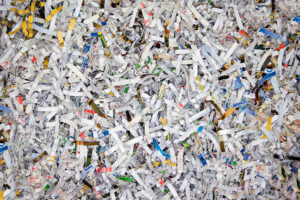Medical waste is a complex and often confusing topic, particularly for those in the healthcare industry. The classification of medical waste can vary depending on factors such as the type of facility, the type of waste generated, and the regulations in place. With so many factors to consider, it can be difficult to determine what is and what is not considered medical waste.
However, it is crucial that healthcare facilities understand the proper classification of medical waste. Improper management and disposal of medical waste can have serious consequences, including harm to the environment and individuals who come into contact with it. By understanding what is and what is not medical waste, healthcare facilities can take the necessary steps to properly manage and dispose of it, reducing the risk of harm to staff, patients, and the environment.
In this blog, we will provide a clear understanding of what is considered medical waste, explore strategies and best practices for reducing medical waste in healthcare facilities, and highlight the innovative waste treatment solutions offered by OnSite Waste Technologies.
Regulations for Medical Waste
Proper disposal of medical waste is regulated by federal, state, and local agencies. The Environmental Protection Agency (EPA) and the Occupational Safety and Health Administration (OSHA) provide guidance and regulations for the handling, transportation, and disposal of medical waste.
The EPA’s medical waste regulations require healthcare facilities to properly segregate, label, package, and store medical waste. Healthcare facilities must also follow specific requirements for treatment and disposal of medical waste, depending on the type and quantity of waste generated.
OSHA’s Bloodborne Pathogens Standard requires healthcare facilities to protect their workers from exposure to bloodborne pathogens, including those found in medical waste. This includes providing appropriate personal protective equipment and training for workers who handle medical waste.
Examples of Medical Waste
- Infectious waste, such as discarded sharps, contaminated gloves, and gowns.
- Pathological waste, such as tissue samples and body parts.
- Pharmaceutical waste, such as expired or unused medications.
- Chemical waste, such as disinfectants and solvents.
- Radioactive waste, such as unused radioactive materials.
Healthcare facilities generate large quantities of medical waste, and it is essential to manage it properly to protect the environment and the health of workers and patients.
Conclusion:
Proper management of medical waste is critical for healthcare facilities to ensure compliance with regulations and protect the environment and human health. By implementing strategies and best practices such as proper segregation, waste minimization, recycling, and staff training, healthcare facilities can reduce their medical waste output and minimize their environmental impact.
OnSite Waste Technologies is committed to providing innovative waste treatment solutions to healthcare facilities. Our cutting-edge TE-5000 technology can safely dispose of medical waste on-site, reducing carbon footprint and regulatory risk. Contact us today to learn more about how we can help reduce your medical waste output and protect the environment.
Contact us today to learn more and to join the fight for environmental sustainability with innovative medical-waste solutions.
Sources:
EPA Medical Waste Regulations: https://www.epa.gov/rcra/medical-waste
OSHA Bloodborne Pathogens Standard: https://www.osha.gov/laws-regs/regulations/standardnumber/1910/1910.1030










